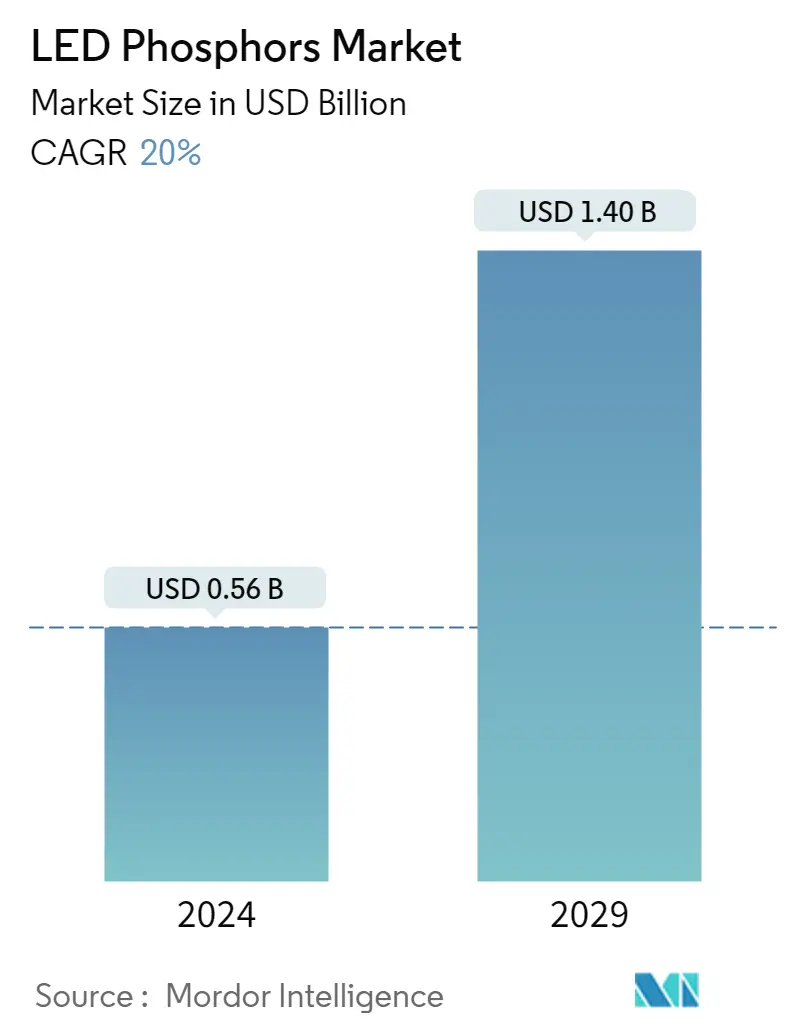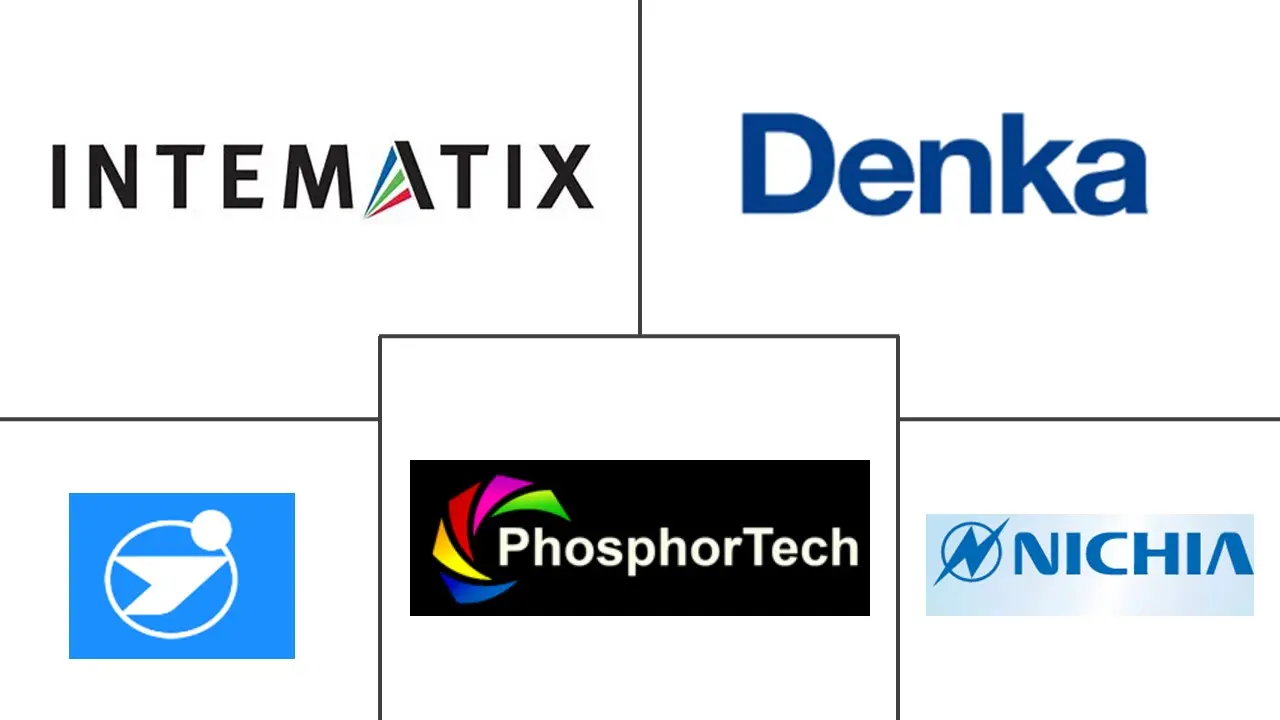Market Size of LED Phosphors Industry

| Study Period | 2019 - 2029 |
| Market Size (2024) | USD 0.56 Billion |
| Market Size (2029) | USD 1.40 Billion |
| CAGR (2024 - 2029) | 20.00 % |
| Fastest Growing Market | Asia Pacific |
| Largest Market | Asia-Pacific |
Major Players
*Disclaimer: Major Players sorted in no particular order |
Need a report that reflects how COVID-19 has impacted this market and its growth?
LED Phosphors Market Analysis
The LED Phosphors Market size is estimated at USD 0.56 billion in 2024, and is expected to reach USD 1.40 billion by 2029, growing at a CAGR of 20% during the forecast period (2024-2029).
The growing preference for LED lighting technologies over conventional lighting systems is one of the primary factors driving the market's growth. Additionally, the increasing popularity of white LEDs has further propelled the market growth.
- LED phosphors are crucial materials in the manufacture of white LEDs. Phosphor composition largely determines an LED's efficiency, light quality, and stability. White LEDs are generally a combination of a blue light-emitting indium gallium nitride die and phosphor, which takes blue light and then converts it into a broad-spectrum peaking at yellow or amber.
- Government regulations mandating the use of LEDs are accelerating the demand in the market studied in several regions. For instance, in the United States, as the law requires energy savings to be 45 lumens per watt for the common types of light bulbs, a 60-watt incandescent light bulb can put out around 15 lumens per watt; a halogen incandescent bulb offers around 20 lumens per watt; CFL bulb provides 65 lumens per watt; LEDs put out 80 to 100 lumens per watt with a fraction of energy.
- Materials scientists at FEFU (Far Eastern Federal University), in partnership with an international research team, advanced the invention of composite ceramic materials (Ce3+:YAG-Al2O3), i.e., solid-state light converters (phosphors) that can be used in ground and aerospace technologies. LED systems based on molded materials can preserve 20-30% more energy than commercial analogs. According to the photonics development roadmap run in Russia, the development of LED technology with an efficiency of more than 150 lm/W would allow for savings of up to 30% in electricity by 2025.
- While developing phosphors LED smart lighting hardware components, there is an additional cost associated with this part of the project. Even though the price for hardware components has been dropping over the last few years, this element remains one of the essential factors in estimating the final price of the smart lighting project. In a smart lighting ecosystem, hardware contains several important elements, sometimes enhanced by additional components, such as light sources and sensors. The backend part of the smart lighting solution consumes at least 2,000 hours of development teamwork, and its price starts at USD 60,000.
